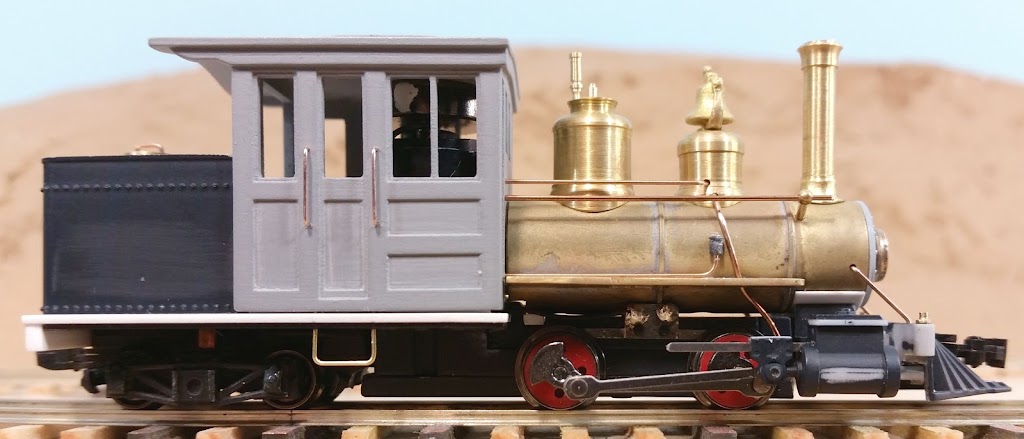Hopefully the first part of "Narrow-Minded" peaked your interest in narrow gauge railroads. Now you're probably wondering how to model them....
For the longest time, if you wanted to model a narrow gauge railroad, you had to purchase brass locomotives and rolling stock. A wide variety of products were available for many different prototypes, but they were expensive.
 |
| The Bachmann On30 Mogul. |
In the late 1990s, Bachmann released a O scale (1:48) 2-6-0 Mogul based on a Colorado & Southern (3' gauge) prototype. There were two unique things about it. First, it was plastic, and second, it was an On30 locomotive. On30 (also known as On2½) uses O scale models that run on HO scale track (16.5 mm), which scales out to be 30" wide in O scale. It's an inexpensive way to model "thin gauge," and it can be used to represent a variety of different gauges. One of the coolest things (in my opinion) about On30 is that you can modify HO locomotives to get some really unique results which are full of character. This scale has led to the creation of several small businesses which offer rolling stock and locomotive modification kits. Today, On30 is the most popular scale used to model narrow gauge. If you're looking to get started in it, check out
The Pacific Coast Air Line Railway. It has a variety of information on locomotives, rolling stock, track, and scenery.
The two model railroads below show what can be achieved in On30.
I was first introduced to On30 when I received a Bachmann Christmas Mogul and some passenger cars from my next-door neighbor. After some Googling, I learned a lot about the scale and quickly gained interest. Model Railroader Video Plus's
Olympia Logging Co. project railroad also intrigued me. I liked the idea of narrow gauge railroading with locomotives that weren't much larger than HO standard gauge motive power. But then I realized that all the structures were O scale, which meant that they would take up a lot more space. This wasn't good because I don't have much space to work with. Alas, there was a solution! While I gained knowledge about On30, I learned about another scale that is similar - HOn30.
HOn30 (or HOn2½) follows the same principle as On30. It is HO (1:87.1) scale locomotives running on N scale track (9 mm), which also scales out to 30" in HO. It can also be used to model a variety of gauges, but it's most commonly used to represent the Maine two-footers. Originally, the first HOn30 equipment was produced by Associated Hobby Manufacturers (AHM) in the 1960s under the name "Minitrains." Bob Hayden and Dave Frary pioneered in in the scale, building several layouts: the Elk River Line,
Thatcher's Inlet, and two versions of the
Carrabasset & Dead River. Several HOn30 brass models were produced in the 1980s and 90s, after the Minitrains line went out of production in the 70s. The scale wasn't very popular at the beginning of the 2000s, but recently, it has been making a comeback. Both
Big City Hobbies (BCH) and a
German company have revitalized the Minitrains line, allowing many to get started with high quality, well running models. (The German Minitrains focus both on European and American prototypes and are available from the
Original Whistle Stop and
Caboose Hobbies in the U.S.) 3D printing and small businesses have greatly increased the number of products available. Even Bachmann has gotten involved with the release of "Skarloey" in their Thomas & Friends line. This scale is perfect for me because it is just like On30 but in a smaller space! If you're interested, check out the
HOn30 Home Depot for more information. Also, take a look at Rich Brungard's "
HOn30 Modeler Roundup" on his business's (Marsh Creek Miniatures) blog.
 |
| Thatcher's Inlet, built in the 1970s. |
|
 |
| Chris McChesney's Sandy River & Rangeley Lakes No. 10 and White Birch Water Tank. |
I've hope you've learned how inexpensive (compared to brass) narrow gauge modeling can be. Give it a try, whether you choose On30 or HOn30. I'm really excited myself to hop aboard the HOn30 express and have fun as I go for the ride!

























